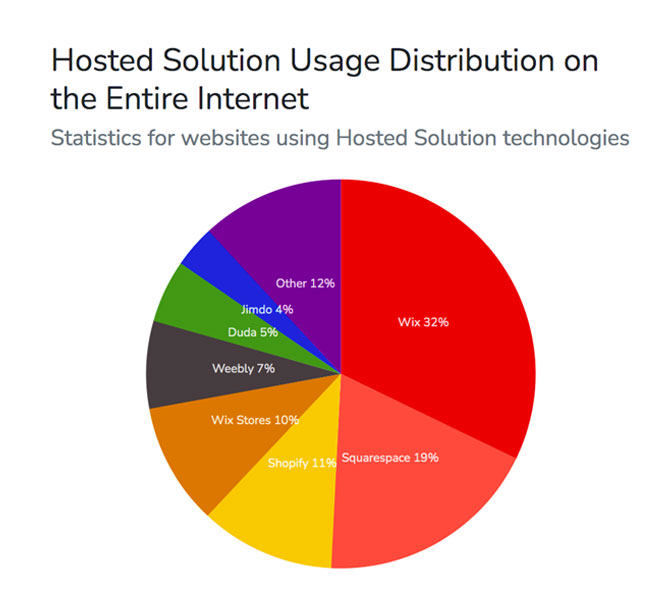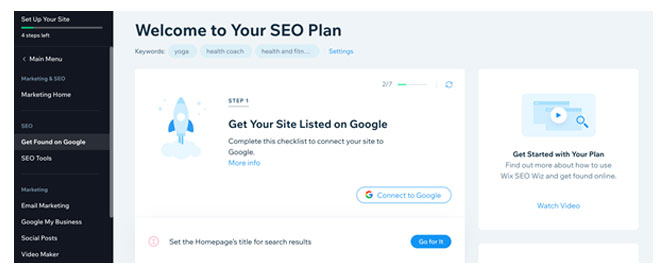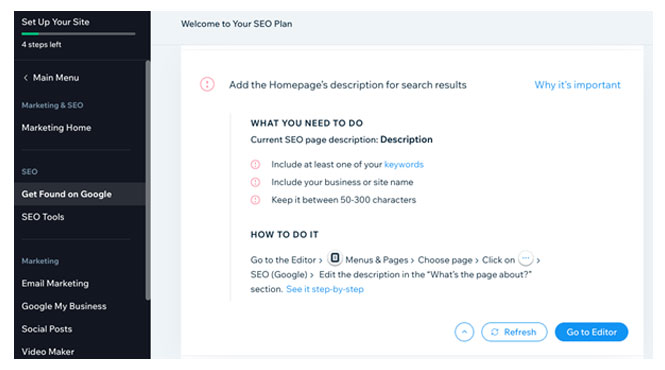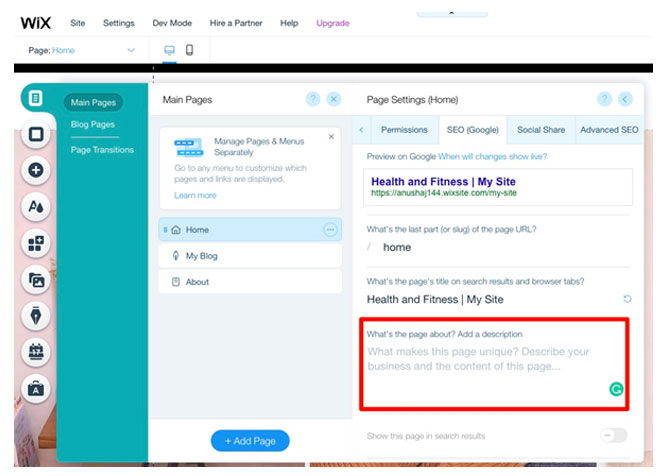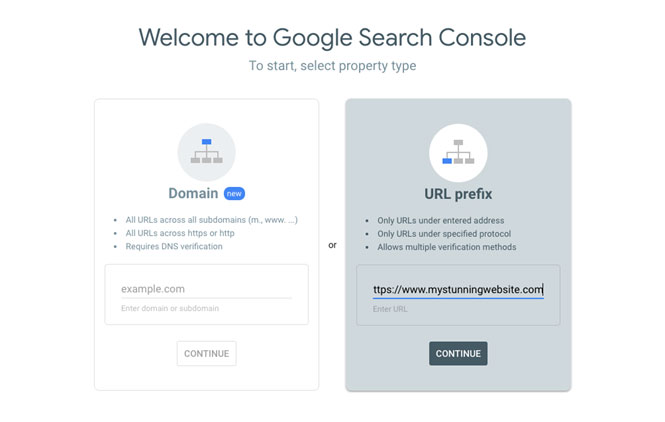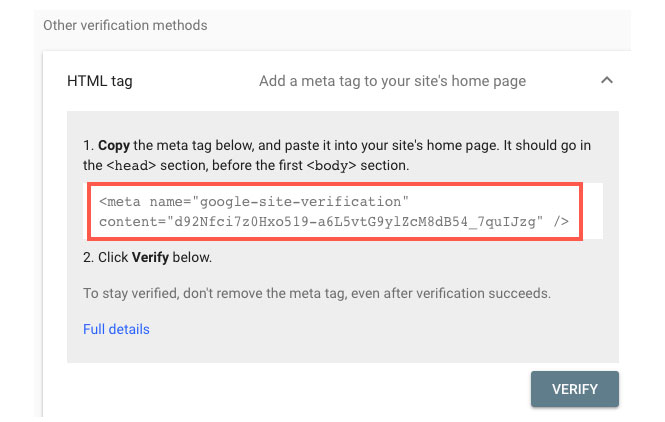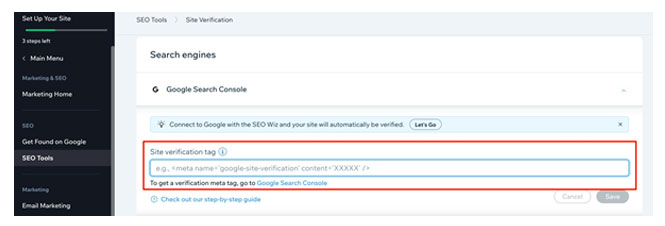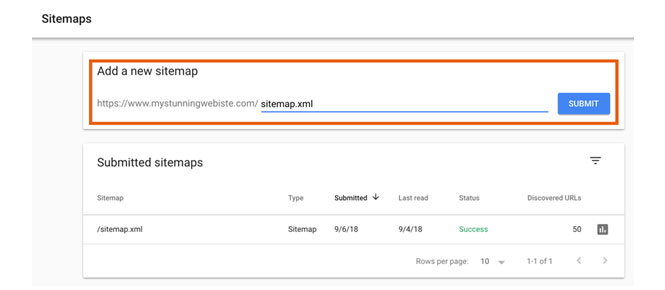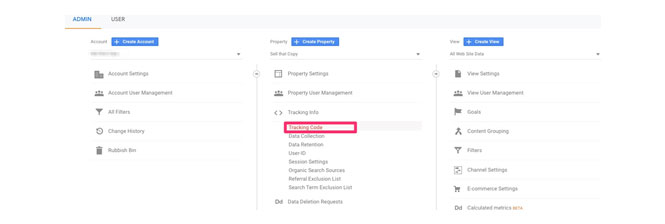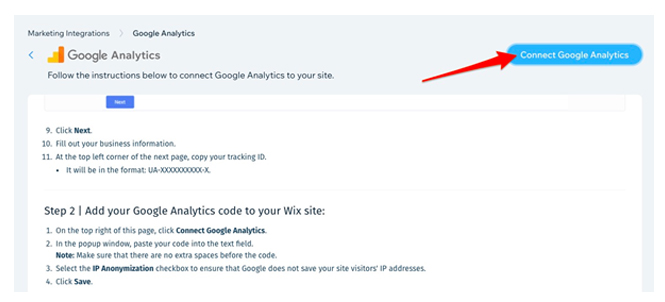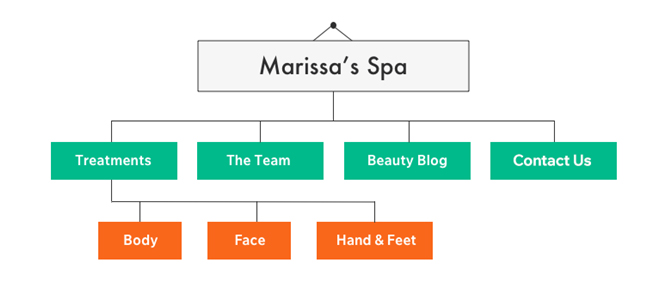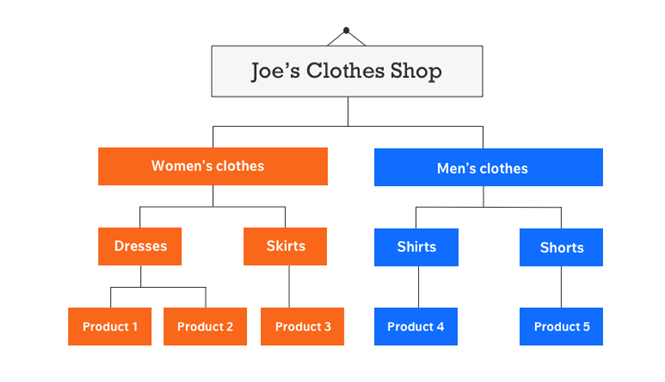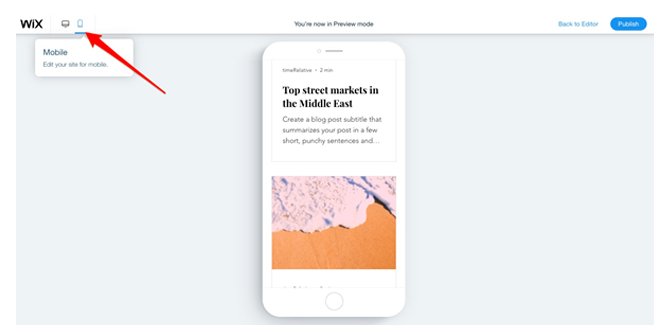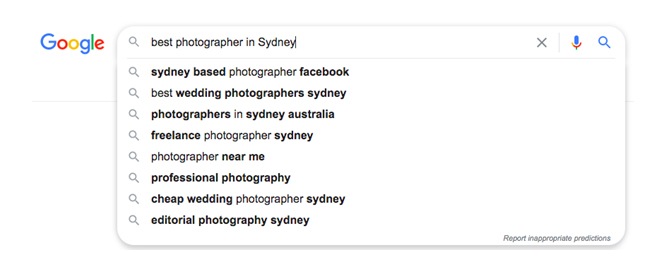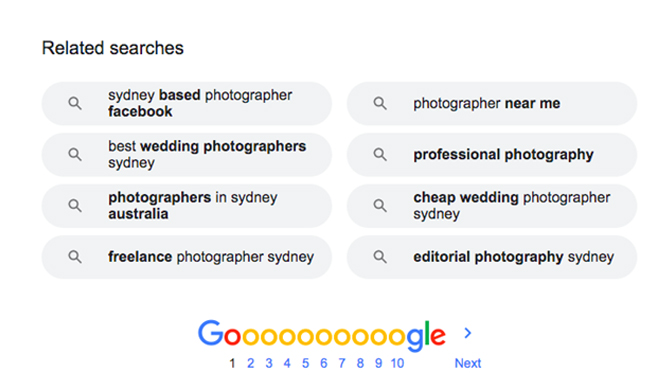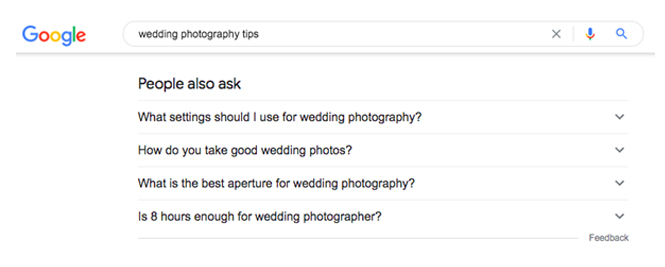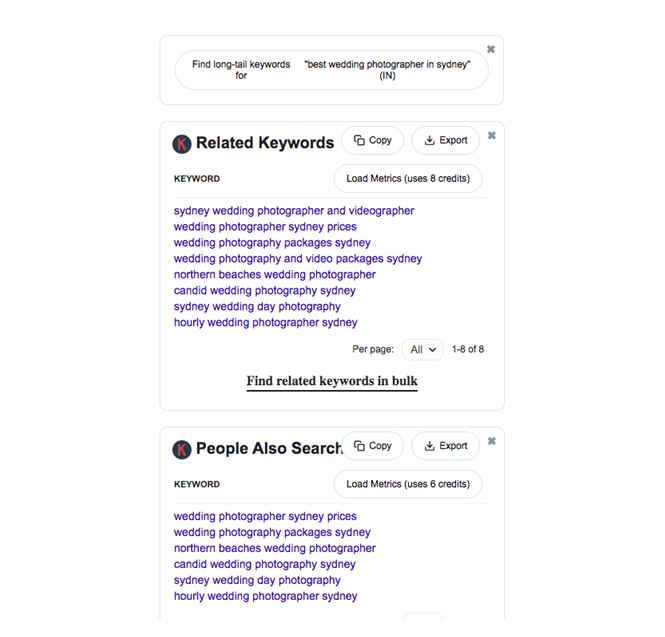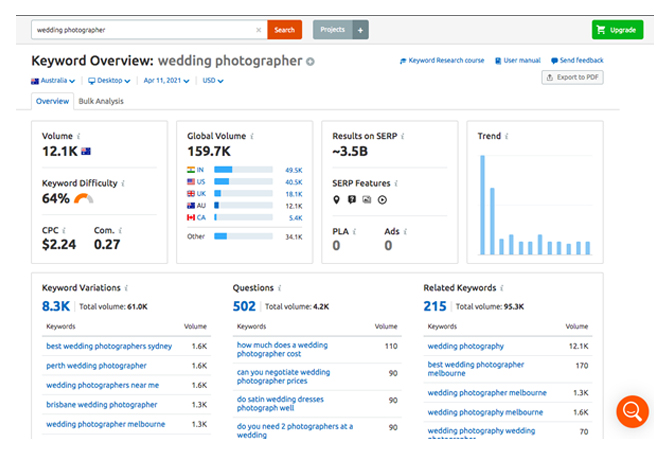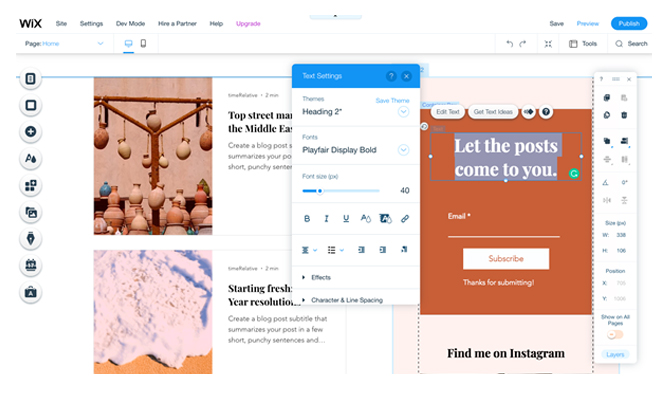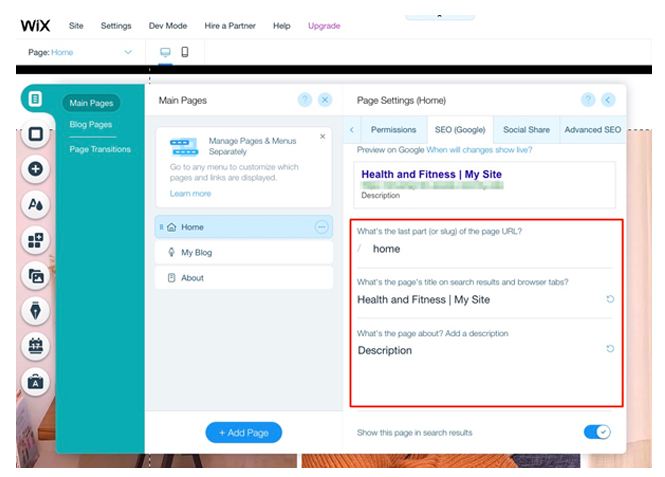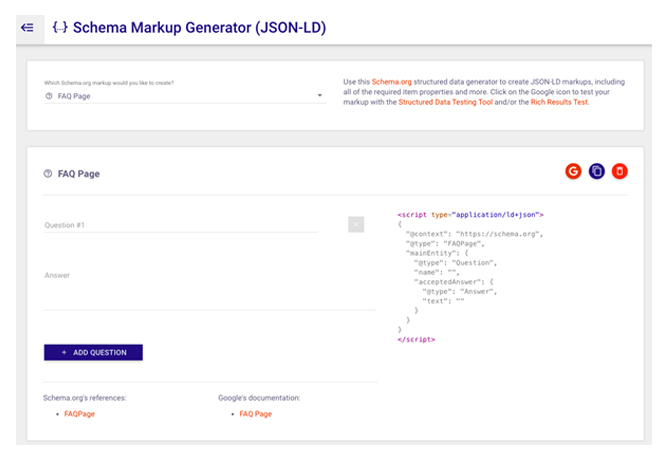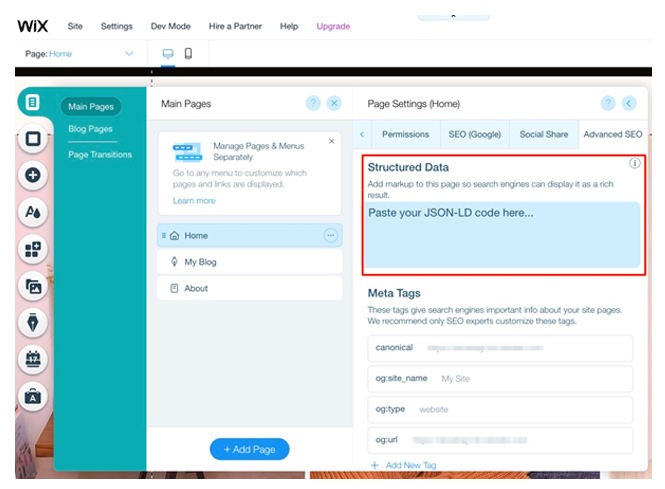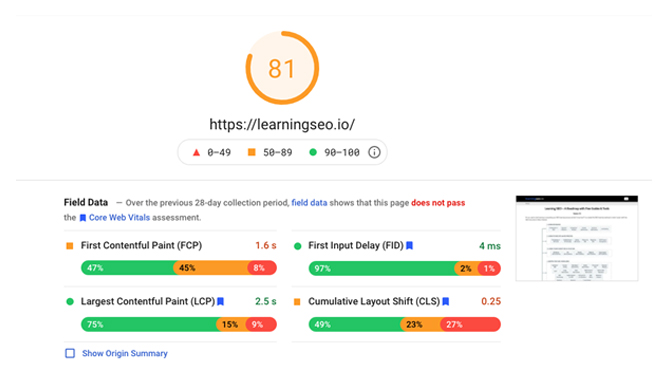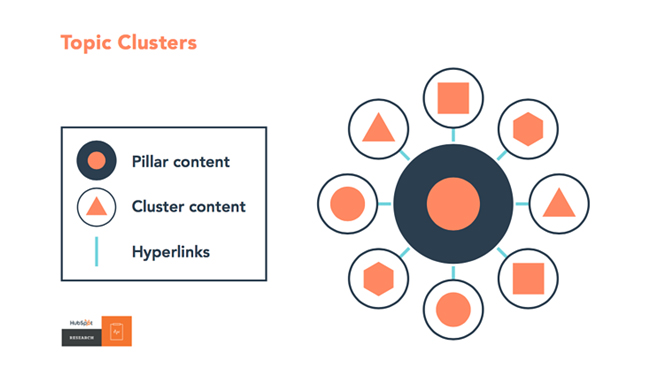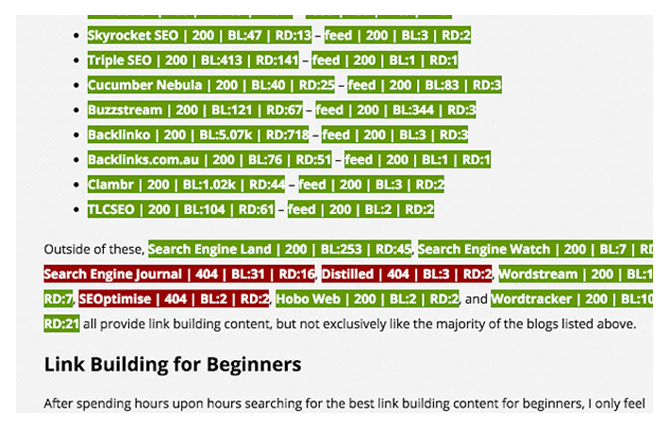
Wix SEO Agency
Wix is a popular website builder that allows users to create custom websites, online stores, blogs, or portfolios without the need for coding knowledge. The platform is easy to use and very versatile, making it a great option for businesses of all sizes. Wix includes everything you need to get started, including templates, designs, and applications. Whether you’re already using a Wix website, or you want to find the best platform for your needs, Supple can help you. While Wix is easy to use for amateurs, our experts can ensure your website is fully optimised, customised, and functional, providing a professional online presence for your business.
The Ultimate Guide to Wix SEO
You have done it all!
You have launched a terrific, user-friendly and functional website for your business. You are building your brand on social media. You are consistently producing content on your super-active blog.
But none of that matters if you do not have a sound SEO strategy to support these tasks. At this point, you may want to immediately turn to an SEO agency that can help you out. You would not be wrong in thinking so — SEO can get complicated.
Even then, it is always a good idea to stay updated with the basics and understand more about the crucial pillars that constitute your SEO strategy.
Keyword Research is one of those pillars.
So, without further ado, let us get started.



What is Wix?
Wix is a popular website builder that offers an easy drag and drop interface to design visually appealing websites. It is a budget-friendly solution for small business owners who are interested in developing their website themselves.
The best part about Wix is that there is no prior coding or website design experience needed to design a website. Anyone can easily build a website using the 500 customisable templates and the easy-to-use features offered by the platform.
Is Wix the Right Platform For Your Business?
If you are a small business on a tight budget, then you probably do not want to spend your resources on hiring web designers and developers to work on your business website. In such a case, using a platform like Wix can help you go live with your website with just a few simple settings.
So, if you are a small business owner with no coding experience, then Wix may be the right platform for your business. In case you want to build a sophisticated website with advanced design and unique capabilities, then Wix might not be the right platform for your business website.
Does Wix Have Good SEO? Are Wix Websites SEO Friendly?
Yes, Wix offers a variety of basic and advanced SEO features that makes it easier for its users to implement SEO on their Wix site. Free tools such as Wix SEO Wiz take you through a step-by-step plan to implement basic SEO on your website.
Though Wix comes with many in-built SEO-friendly features and capabilities, simply sticking to these might not be the best idea. In this guide, you’ll learn much more about all kinds of SEO strategies that you should implement on your Wix website to ensure that your website soon starts ranking on the first page of Google.
Do You Need a Paid Plugin to Improve Wix SEO?
No, you do not have to use a paid plugin for Wix SEO optimization. The platform comes with many SEO-friendly in-built features and capabilities using which you can implement on-page SEO for your website.
However, the Wix App Market comes with various paid SEO apps such as Rabbit SEO and Site Booster that can help you improve Wix SEO. Some of these apps come with a free plan. So, you should definitely check these apps out.
Our Team Leads
plan to meet your company's online
marketing goals.
Wix SEO Setup
Before moving on to the question “how to do SEO on Wix” and the strategies that you can implement to ensure that your Wix site ranks on Google, let’s have a look at the initial set up that will help you get started with SEO for Wix websites.
Ensure That Search Engines Can Index Your Site
Before you begin with the SEO for your website, you need to know about search engine visibility and indexing.
Search engines such as Google and Bing have crawlers that go through various websites across the internet and rank them when a user searches for a query.
In order for these crawlers to index your website, you need to make sure that your site is visible to these search engines. You can do this through a simple setup from Wix’s dashboard.
Navigate to SEO Tools > General SEO Settings. Here, ensure that the Let search engines index your site option is enabled.
Set Up Wix SEO Wiz For Your Website
Before you begin working on the SEO of your Wix site, you should start by setting up Wix SEO Wiz. Wiz SEO Wiz is a free tool offered by the platform that provides you with a step-by-step plan to implement the basics of SEO for Wix.
If you are a total beginner in the world of design for Wix websites and SEO, then Wix SEO Wiz can be a great tool to guide you through the initial steps of getting the SEO of your website done.
You can set up Wix SEO Wiz by going to the Wix dashboard and selecting the Marketing Home option from the left sidebar. Here you can click on Start Now under the Get Found on Google option.
Now, simply enter the name that you prefer for your site, physical addresses (if any), and a list of up to five keywords that describe your business. Next, click on Create SEO Plan, and now you can start using the Wix SEO Wizard tool.
Now, the tool will show you a checklist full of tasks to complete to implement basic SEO for your website. The checklist also comes with descriptions that guide you through each step.
Simply go through the checklist and complete each task listed by the tool.
For example, for adding the meta description for your website’s homepage, you can go to the site editor, click on Main Pages, go to the Home page and choose the SEO (Google) option.
Here, you’ll find a place to add the description for your site’s homepage. For now, you can simply follow the tool and add a keyword-rich title, URL, and description for the homepage. In the next section, we’ll discuss in detail how to find the right keywords and optimise all your site’s pages for them.
Ensure You Have a Valid SSL Certificate Installed
Security is one of the top priorities of search engines like Google. This is why having a valid SSL certificate for your website is a must if you want to get ranked on Google.
Having a valid SSL certificate will turn your HTTP connection into a more secure HTTPS connection. This means that any communication between your website and the users’ browsers are encrypted and thus more immune to cyber attacks.
All Wix websites come with a valid SSL certificate. So, you do not have to worry about explicitly getting one.
Set Up Google Search Console
Google Search Console is a free tool offered by Google that allows you to track the performance of your website on Google search results.
Using the tool, you can keep track of keywords that you are ranking for, the number of clicks, number of impressions, and many more. Google Search Console also helps you detect any crawl errors or any other issue with your website.
Verify Your Site on Google
For setting up Google Search Console for your Wix site, you first have to verify your site. Login to Google Search Console using the URL Prefix option, click on Continue and copy the meta tag code.
Next, leave this window open and hop on to your Wix dashboard. Here, go to SEO Tools > Site
Verification > Search Engines > Google Search Console and then enter the site verification code that you previously copied.
Then, return to your Google Search Console window and click Verify. Your site verification is done.
Submit Your Sitemap to Google
A sitemap is an XML file with the list of your site’s URL. Google uses the sitemap to crawl and index your site. Once your website’s verification is done, you can submit your sitemap to Google.
You can access your Wix site’s sitemap by simply appending /sitemap.xml to your website’s URL. For submitting this to Google, head over to your Google Search Console dashboard and open Sitemaps from the sidebar. Here, append sitemap.xml to the URL and click on Submit.
Google will start indexing your website after some time.
Set Up Google Analytics
Understanding your website visitors, their behaviour, and other details about them plays a very important role in SEO. Google Analytics, another free tool by Google, can be a helpful tool to offer such insights about your website’s visitors.
You can learn about your site visitors’ demographics, top pages of your website, sources of acquisition, and many other key details that can help you optimise your site and rank higher for keywords.
You can connect your Wix site with Google Analytics with the help of a tracking code. Start by logging in to your Google Analytics account. In your Google Analytics dashboard, navigate to Admin > Property > Tracking Info > Tracking Code. Here, you can copy the code that is displayed.
Next, go to your Wix dashboard. Here, go to Marketing > Marketing Integrations > Google Analytics > Connect. On the top right corner, click on the Connect Google Analytics button. Here, paste the copied code, select the IP Anonymization checkbox and click Save.
Optimise Your Site Structure
Optimising your business website’s structure is a very important part of your strategy when it comes to SEO with Wix. First of all, what is meant by site structure? Site structure is the way pages and information is arranged on your website.
Site structure is important because it determines the usability of your website. Users landing on your site should be able to easily navigate to different pages and sections of your site. Any difficulty in usability will hurt your user experience, leading to a dip in your rankings.
Typically, any site’s structure starts from its core pages – homepage, about page, contact us page. Depending on the type of your business, there may be other pages such as the services page, meet the team page, etc.
Source: https://seoguide.wix.com/en/article/optimizing-your-site-structure
For an eCommerce website, the structure will be different. There will be a homepage followed by category pages, followed by product pages.
Source: https://seoguide.wix.com/en/article/optimizing-your-site-structure
Depending on the type of your business, you can begin planning out the structure of your site. You can also take a look at the websites of your competitors to get an idea of what works well.
Ensure Mobile-Friendliness of Your Website
Once you’re done with the initial few pages of your Wix site, but before you publish your site, it’s important to ensure that your site is mobile friendly. Mobile-friendliness is an important part of SEO.
In fact, more than 60% of Google searches are done from mobile devices. Hence, you must ensure that your website is responsive to all device sizes and the design looks good on the mobile version as well.
By default, all the templates offered by Wix are mobile-friendly. But, to double-check, you can check the Mobile Preview option before hitting publish on any page. You can also open your site on different devices to see if your website is indeed mobile-friendly.
You can also use Google’s free Mobile-Friendly test tool that goes through your site and let’s you know if it is mobile-friendly and responsive.
Robots.txt File
A robots.txt file tells Google crawler the different pages on your site can be and cannot be crawled. You do not have to worry about robots.txt as it is automatically generated by Wix. But if you wish to override it by editing the file then Wix allows you to do that.
You can edit the robots.txt file on Wix by heading over to the Wix dashboard. Go to Marketing and SEO > SEO Tools > Robots.txt File Editor > View File. You can make changes here and click on Save Changes.

Case Studies
Return on Investment for business owners.

Wix On-Page SEO Strategies
Now that you are done with the initial set up for your Wix website SEO, we can move on to the question: how to do SEO on Wix? It starts with on-page optimisation strategies. But first, what is meant by on-page SEO?
On-page SEO refers to the optimisation strategies that can be implemented on each page of your website. Through on-page SEO techniques, you can implement certain strategies on your web pages, contents, and settings to improve the search engine rankings.
Off-page SEO refers to the strategies that need to be implemented outside of your web pages. We will delve into off-page SEO in the next section.
Perform Keyword Research
The first step to on-page SEO is the process of keyword research. Keywords are nothing but the search phrases that we use while searching for something in search engines.
For example, if you are looking for some workout inspiration, you may search for the term “at-home 20 min exercises.” So, this is a keyword. When any website optimises its web page for this keyword, it is likely that the page will rank on search engines like Google.
In order to bring the right people to your website, you should perform keyword research and come up with the right set of keywords for your website.
Keywords can be short-tail or long-tail. Short tail keywords usually are highly competitive and difficult to rank for. Short-tail keywords get higher search volume. You should aim to use a combination of both short-tail and long-tail keywords for the best possible results.
Another broad way to categorise keywords is informational and commercial. Suppose that you own a photography business. Then keywords such as “wedding photography tips” and “best selfie poses” will fall under the keywords with informational intent category. This is because users searching these keywords are only interested in learning more about photography.
Whereas keywords such as “best wedding photographer in Sydney” are the ones with commercial intent. The users searching this term are looking to hire a photographer.
In order to get the best results, you should optimise your website for both informational and commercial intent keywords. You can add commercial intent keywords to your site’s core pages such as homepage, landing pages, contact us page, about page, services page, etc. You can optimise your blog pages for informational intent keywords.
Keywords with commercial intent will help you get customers within a short time. Keywords with informational intent help your site rank higher over time, and people will eventually start getting familiarised with your brand. This will ultimately lead to more customers for your business.
Find Target Keywords With Informational and Commercial Intent
There are various ways to find the right informational and commercial intent keywords for your business website. Here are some of the easiest ways:
- Google Search Results Page:The easiest way to find keywords is to use the Google search results page. Start by creating a list of main topics and subtopics that best describe your business. Next, search for these keywords on Google.When you start typing the search term on the search bar, you’ll find that Google will come up with a list of autosuggestions. All these are keywords that users search for and you must use for your website.
When you scroll down to the bottom of the page, you’ll find the “Related searches” section full of keywords that are related to your main search term.
In the middle of the page, you’ll find another section called “People also ask.” This section consists of query-based keywords that users search for. You can also use these keywords to optimise your site. Using a tool like KeywordInsights.ai will help with this process.
- Keywords Everywhere Chrome extension:The Keywords Everywhere free Chrome plugin comes up with a list of related and long-tail keywords for every time you do a Google search.
- Keyword research tools:If you want to go more in-depth with your keyword research, then using a keyword research tool is a great idea. You can use tools such as SEMrush, ahrefs, AnswerThePublic, Also Asked and more to find the right keywords for your website pages and blog content.All these tools work in a similar way. Simply search for the main keywords or topics relevant to your business. The tool will list down a bunch of keywords that you should optimise your content for.Most of these tools also have indicators for the search volume and SEO difficulty for any keyword. Consider going for keywords with comparatively lower SEO difficulty. These keywords will be easier to rank for when you are just starting out.
Research Your Competitors
Researching your competitors is also a great way of coming up with the right list of keywords that you should optimise your site for. Most keyword research tools allow you to perform competitor analysis.
Simply type in your top competitors’ URLs in the above-mentioned keyword research tools, and you’ll get a list of keywords that these websites are ranking for. Going after these keywords is a great way to get more potential customers to your business website.
You can use tools such as SEMRush, Ahrefs, etc., for finding competitors’ keywords.
Optimise Your Website’s Pages For Target Keywords
Once you are done with your keyword research, your next step should be to start optimising your web pages for the right keywords. You can begin with the homepage, followed by the other important pages.
You might have already done this as a part of the SEO plan provided by the Wix SEO Wiz. Now, you can go back and make changes with the new set of keywords that you’ve found.
For this step, simply go to your Wix site’s editor and start editing the homepage’s text. Start adding the main target keywords and the related keywords to different parts of your homepage.
Make sure that you do not stuff the keywords on your homepage so much that the text seems unnatural. Ensure that the text is readable and makes sense to any website visitor.
Similarly, you can also edit other pages of your website, such as the About us page, Contact page, Services page, etc., to include the right keywords.
Optimise Title Tags, Meta Descriptions, and URL Slugs
Apart from the text of your website’s pages, you should also include target keywords in the title tags, meta tags, and URLs of these pages. Optimising these settings for target keywords will also help you rank higher in Google.
For editing these Wix SEO settings, go to the Wix editor > Main Pages. Here, select any page and go to SEO (Google.) Here, you can add the page’s title, meta description, and URL slug – all optimised for the right target keywords.
Create High-Quality Blog Content
Search engines such as Google love to rank websites that offer some valuable information to the users. Hence, maintaining an up-to-date blog can be added plus for the SEO of your website.
With the right Wix blog SEO, your site will start ranking for informational keywords. Eventually, your Wix site will receive more visitors. And all this will help you generate more leads and land more customers.
So, start creating unique, valuable blog content for your target audience from the day you start your website. Ensure that you create content around topics that your target audience will be interested in.
To find topics for your blog, you can use the keyword research methods mentioned in the previous section. You can also research your competitors and look at the type of content that they are putting out.
For creating blog content for your site, go to the Wix dashboard > Blog > Create New Post. This will open up a text editor where you can add your content, along with images, videos, GIFs, etc. Once you are done, you can hit publish, and your blog post will be live.
Ensure that you figure out the right keywords for every blog post that you publish. Use these target and related keywords in the posts’ title, headings, sub-headings, image alt tags, in the blog content (introduction, body, and conclusion), meta description, and the URL slug.
Ensure Proper Page Structure
Just like site structure, having a hierarchical structure for every page on your site is also very important in determining your search engine rankings. Without a proper page structure, search engine crawlers will find it difficult to go through your pages and comprehend their contents. Improper page structure also affects your site’s accessibility.
Therefore, be it main web pages or blog pages, ensure that you follow a proper page structure. Follow a hierarchical structure by starting with the title, followed by H1, H2, H3, etc. and then come to the paragraphs. Ensure that you structure your content into numbered or bulleted lists wherever possible.
Add Structured Data
Structured data or schema markup is a format used to mark up the information about any website. Structured data helps search engine crawlers to understand the content and the context of your website.
Adding structured data can help your website show up in rich results at the top of the Search Engines Results Pages (SERPs.) By default, Wix adds structured data for blog posts, product pages (for eCommerce stores), event pages, booking pages, and forum posts.
But, if you want to add any other type of structured data such as recipe, breadcrumb, event, FAQs, etc., to your Wix site, then you can do that too. You can use tools like FAQSchema Generator, Schema.dev and this one from Technical SEO to generate the schema code.
Then, copy this structured data code and head over to your Wix editor. Under Pages > Main Pages/Blog Pages > Advanced SEO > Structured Data, you’ll find a place to paste the copied structured data.
Ensure Readability
Search engines such as Google stress user experience as an important factor in ranking different websites in SERPs. Google uses a set of UX signals to measure the UX of any website page that it crawls and uses this information to rank the pages.
To ensure a good user experience for your site, good readability is a must. Hence, with every page that you publish on your Wix site, ensure that it is easy to read and understand to visitors landing on the page.
- Follow a proper hierarchical page structure. Add descriptive headings and subheadings for every section of the page.
- Keep your sentences and paragraphs short.
- Avoid huge walls of plain text. Instead, leave blank spaces that allow readers to skim through the contents of the page.
- Support your content and break up plain text with plenty of media in the form of images, screenshots, videos, GIFs, charts, graphs, infographics, etc.
Optimise Content for On-Page UX Signals
As discussed earlier, search engines like Google prioritise user experience as an important ranking factor. Google uses UX signals to measure the user experience offered by your site. Hence, optimising for these UX signals can help you rank higher up on SERPs.
Here are some of the UX signals that should optimise for:
Bounce Rate
Users are said to bounce when they leave your site without taking any action, such as clicking on a link or making a purchase. For any website, there will always be users who bounce.
But, you can reduce the bounce rate by ensuring that you offer the visitor what they came looking for. Bad website design and navigation are other factors that can lead to increased bounce rate.
Dwell Time
Dwell time is the amount of time any user spends on your page. You can increase dwell time by creating content that is in-depth and valuable. Adding engaging elements such as images and videos to your web pages can also help.
Organic Click-Through Rate (CTR)
Organic CTR is the percentage of users who view your site’s link on the SERP vs. the ones that click on the link and land on your page. Optimising your SEO title, meta description, and URL can help increase the organic CTR of any page. Ensure that the title and meta tag are descriptive and enticing enough for the users to click through.
User’s Search Intent
Search intent is the main goal of the user when searching for a query in a search engine. The search intent can be informational, navigational, transactional, and commercial. It is important that you optimise your content for the right search intent.
For example, when a user intends to look for information on a topic, your page should be optimised for informational intent and not commercial intent. If not, then the user will bounce off your site.
Optimise For Speed
Speed is also a vital ranking factor considered by Google. Did you know that users will leave your site if it takes more than 3 seconds to load? Hence, optimising your site for quick page load speed is a crucial part of SEO.
Wix offers some default features that ensure that your site’s performance is high and the pages’ loading time is significantly reduced:
- Wix uses a global system of cache services, and proxy servers called Content Delivery Network (CDN) that significantly reduces your site’s loading time.
- Wix offers automatic, or manual page caching that again helps reduce the page load time. You can control this by going to the Wix dashboard > Pages > Main Pages/Blog Pages > Settings > Advanced Settings.
- Wix also offers automatic image optimisation. Image files with larger sizes are the main factor that contributes to slowing down a page’s speed. Wix automatically compresses the images that you add, resulting in better performance.
- Wix also offers lazy loading of images, which again results in higher page load speeds.
You can use Google’s free PageSpeed Insights tool to check the speed of your desktop and mobile versions of your site. The tool also offers suggestions for improving the speed of your website.
Avoid Duplicate Content
Having duplicate content on your Wix site can lead to a huge setback in your search engine rankings. Having duplicate content means that your site’s pages compete with each other while ranking for a search term on Google. This is not an ideal scenario and must be avoided at any cost.
Optimise Images
As discussed in the above section about speed optimisation, images are usually the ones that contribute most to the slowness of any web page. Hence, optimising images can be a significant factor in improving your site’s speed and performance.
By default, Wix offers image compression and lazy loading, so you do not have to explicitly worry about these steps. Apart from these, you should also ensure that you add descriptive, keyword-rich titles and alt texts to all the images that you add to your site. Google also considers these factors while ranking your site.
Implement Internal Linking For SEO
Internal linking is the process of adding relevant links to your site’s pages from other pages on your site. Internal linking is also a crucial part of SEO, and hence it is important to implement internal linking as a part of your on-page SEO.
Here’s how you can implement internal linking for your Wix site:
- Add links to related posts and pages from each page on your site.
- Ensure that you add keyword-rich anchor texts to your internal links.
- Internal links help link equity flow from the linking page to the linked page. Hence, try to link to important pages such as the homepage or services page from the other pages.
- Do not overuse internal links, as this may hurt your SEO.
Wix Off-Page SEO Strategies
Off-page SEO refers to the techniques that can be implemented outside of your website’s pages in order to boost your web pages’ rankings on search engines.
On-page optimisation is mostly under your control and easy to implement. In contrast, off-page SEO can be harder to implement but can have a significant impact on your website’s rankings. Hence, your SEO strategy should include both off-page and on-page tactics. Simply sticking to either one wouldn’t fetch you the best results.
In this section, let’s have a look at some of the top off-page SEO strategies that will help your Wix site rank higher on search engines.
Use Content Marketing
Produce High-Quality, Consistent Content
As discussed earlier, producing high-quality content is one of the most effective ways to rank higher up on Google. Most businesses make the mistake of simply putting out the core web pages and not prioritising content marketing.
Google ranks websites with high-quality, up-to-date content that proves to be valuable to its users. Moreover, the chances of users simply landing on your web page and making a purchase is usually low. Users instead like to get familiarised with your offering, gain information, and then go ahead and make the final purchase.
Hence, start creating unique, original content for your website as soon as you go live with your site. Optimise your content for the right keywords. Eventually, your posts will start ranking higher on Google, and you’ll start getting more website traffic this way.
Conduct Original Research Studies and Statistics
Backlinks are hyperlinks originating from other websites to your site. These play a vital role in SEO. In fact, Google considers backlinks as one of the top three ranking factors.
While there are many ways to build backlinks to your site (discussed in the next section,) creating high-quality content will automatically get numerous backlinks without you having to do anything.
Conducting original research and creating statistics can be a great way to get high-quality backlinks to your website. This is because websites are always looking for original studies and statistics that can back up their claims. And thus, these types of content help you generate many good-quality external links.
Use Content Clusters
Content clusters offer in-depth information about a specific topic. Content or topic clusters usually consist of one pillar post and a group of clusters. The pillar post consists of content around the main topic. And the clusters cover the sub-topics around the main topic.
The pillar post consists of internal links to all the cluster posts, and the cluster posts may also be interlinked with each other when relevant. Content clusters tend to boost your site’s rankings because they cover the topic at hand in-depth. Any visitor landing on a content cluster would ideally find all the information that they need in one place.
Promote Your Content on all Social Channels
SEO is a process that takes significant time and effort. You cannot publish a blog post and expect it to start ranking in the next few days or even the next few weeks if you are a relatively new website. It may take a few months and a considerable amount of content before Google starts ranking your site, especially if you are in a competitive niche.
Therefore, boosting your content marketing efforts by promoting it on social media platforms can be a great way to get the initial few visitors to your website.
Start by setting up accounts for your brand on as many social media channels as possible. Build a loyal following and share your content on these channels. You can also use email marketing to boost your content.
Build Backlinks to Your Wix Website
As mentioned above, backlinks are one of the most crucial factors in determining your website’s ranking on Google. In this section, let’s talk about different tactics you can use to build high-quality backlinks to your website.
Email Outreach for Grabbing Competitors’ Links
Email outreach is one the easiest ways to build backlinks to your website. Start by using keyword research tools such as SEMrush, Ubersuggest, or ahrefs to generate a list of websites that are linking to your competitors’ website.
Next, create content that is 10x better than the ones on your competitors’ sites. Ensure that your content is more in-depth and valuable to readers. Then, reach out to the list of websites through emails. You can introduce your content and explain how linking to your content can be much more valuable to their leaders.
Email outreach is a time-consuming process, and many might not respond to your emails. But, even if you generate a few high-quality links this way, then the result will be worth your efforts.
Guest Posting
Guest posting on high-quality, relevant websites can also be a great way to build backlinks to your Wix site. This is because the websites that allow you to guest post on their site let you add a backlink to your site, either from the main content or from the author bio section.
To find relevant sites for guest posts, simply do a Google search with the term “guest post + <your_niche>” or “write for us + <your_niche>.” You’ll find a list of websites that offer guest posting. Simply reach out to them with your content pitches and add backlinks to your site’s important pages from these guest posts.
Broken Link Building
Broken links are hyperlinks that no longer work. When users open these links, they’ll usually get a “404 not found” error. This significantly affects the user experience. This is why having broken links on a website is not good for its SEO.
You can use this fact to your advantage and build a few backlinks to your site through this. Head over to the top, most popular websites in your niche and use Chrome plugins such as Check My Links and Link Miner to find broken links in these sites.
Next, reach out to these websites and offer them an alternative to these broken links – a working link to your site. This is an effective way to build many good quality links as no website wants to have broken links as a part of their link profile.
Resource Page Link Building
Many top websites in each niche consist of a “Resources” page which is nothing but curation of links to resources that their audience will find valuable. Such pages usually contain lots of external links and thus are a great link building opportunity.
You can reach out to these websites with any valuable piece of content or tool that will be valuable to their readers. If your content is valuable, then you are bound to generate tons of backlinks this way.
Create Linkable Assets
Linkable assets are high-quality, unique pieces of content that will automatically generate backlinks to your site without you having to reach out to any websites. Common linkable assets are infographics, videos, data visualisations charts, or anything else that is unique and valuable.
Therefore, apart from creating blog content, you should also consider creating such linkable assets that will be extremely useful to users in your niche.
Unlinked Brand Mentions
Many times, websites use your brand name, images, quotes, statistics, etc. on their website without linking to your site. You can reach out to these websites and ask for a link.
You can set up Google alerts for your brand name or any other keywords that are specific to your site. Google will send you email alerts when any other website mentions these keywords. You can then reach out to them through emails, asking them for a link.
Focus on the Quality of the Backlinks
It is important to understand that not every backlink is the same in the eyes of Google. Certain backlinks carry more weight than others. So, what determines the quality of a backlink? There are many factors that come into play.
Try to prioritise the following types of backlinks:
- Backlinks from a website with a higher domain authority
- Backlinks from a web page with a higher page authority
- Backlinks with keyword-rich anchor text
- Backlinks that are placed higher up on the web page
- Do-follow links instead of no-follow links
- Backlinks from a site that is relevant to your link
Prioritising these links will help you get better SEO results even with fewer links.


Conclusion
Wix is one of the most popular website builders that offers a hosted solution. It is beginner-friendly, extremely easy to use, intuitive, comes with hundreds of templates, and offers a wide variety of SEO-friendly features.
Using the strategies and tips provided in this ultimate guide, you can plan out your entire SEO strategy and start ranking on top search engines soon.
If you want to explore other alternative Website builders, you can check out our comprehensive guides on SquareSpace SEO and Webflow SEO.
Client Testimonials
about Our Digital Marketing Services.
- 428 Google Reviews
- 4.9
Extremely reliable and super friendly staff. Jani and Sam helped us with our digital strategy. Would recommend to everyone who wants to get their SEO done.
Mark, Ron and Param from have been incredible to work with. From the very beginning, they took the time to understand our business goals and crafted a clear SEO strategy that is working really well.
Mark and Jani are fantastic to deal with and business has never been better
We are super impressed with this SEO team. They’re honest, transparent, and really know their stuff. They made everything easy to understand and were great to work with from the start. We saw our targeted keywords hit page one with half of them in the #1 spot, and organic traffic is up by nearly 20%. We recommend Supple for fast and high quality results.
I have to speak very highly of the crew of Supple Digital, Mark, Jani and Abbas do an amazing job of my website. Very highly professional and knowledgeable of their products and services. If you are in need of a good website go to these guys
View More Reviews
Popular Articles
Our Blog Is A One-Stop-Shop for Free Advice and
Comprehensive Guides
The Supple team publishes new articles, case studies, and guides all the time. Learn more about digital marketing with our experts.
DIGITAL MARKETING FOR ALL OF AUSTRALIA
- SEO AgencyMelbourne
- SEO AgencySydney
- SEO AgencyBrisbane
- SEO AgencyAdelaide
- SEO AgencyPerth
- SEO AgencyCanberra
- SEO AgencyHobart
- SEO AgencyDarwin
- SEO AgencyGold Coast
- We work with all businesses across Australia
Our Online Marketing Tools
and help you achieve online success.
